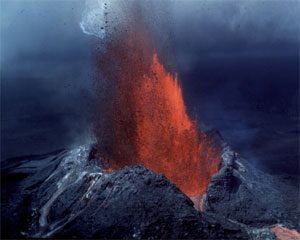
In the Hadean Eon, Earth was covered with active volcanoes like this one.
Why is it called the Hadean Eon?
Scientists named the Hadean Eon after the Greek god Hades, who ruled the underworld. That’s because during most of the Hadean period the surface of the Earth must have been like the Christian image of Hell.
Find out more about the god Hades
Quick summary of geological eras
All our geology articles
When was the Hadean Eon?
The Hadean Eon began when the planet Earth first began to form, about 4.5 billion years ago. At first there was just a cloud of gas and dust, and then the Sun formed, and gradually the planets formed.
How did the Sun form?
What are the planets made of?

The Moon orbiting Earth (taken from space) – NASA
What happened during the Hadean Eon?
Around 45 million years after the planets first began to form, the Moon formed. Probably a large planetoid, about the size of Mars, crashed into the Earth. Little bits of hot rock splashed off during the crash and orbited around the Earth. Eventually these bits joined together, cooled off, and became the Moon.
Find out more about the Moon
On Earth, and probably on other planets too, the heavier iron atoms sank down and became the core of the Earth, and lighter atoms like silica and hydrogen rose to the surface. Most of the gases – hydrogen, carbon dioxide, methane, ammonia, and nitrogen – floated away into space. Water, brought to Earth by comets that crashed into the Earth, boiled into steam because the Earth was still very hot. The water formed a steam atmosphere around the Earth.
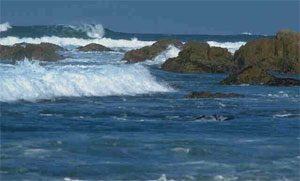
Hadean Eon: The first oceans formed
The oldest rocks formed
Around 4.4 billion years ago, most of the planetoids had gotten smashed up into dust or had become part of a bigger planet. There weren’t any more of them to smash into the Earth.
Now that planetoids weren’t always smashing into them, the Earth and the Moon formed rocky crusts of silica all over them. The oldest Earth rocks and Moon rocks we know about both date to this time. These are igneous rocks like granite and quartz.
Why is granite so hard?
What’s so important about quartz?
What is an igneous rock?
The oceans formed
As the Earth cooled down, about 4.3 billion years ago, the steam in the atmosphere also cooled down and fell as rain on the Earth.
Why does it rain?
That made the oceans. By 4.2 billion years ago, Earth had land and oceans just as it does today. Plate tectonics may have already been moving the land and oceans around.
What is plate tectonics?
The first steps towards living creatures
The oceans in some parts of the Earth may even have been frozen into ice, as the North and South Poles are today. Inside the oceans, amino acids from space began to join together into the first proteins – not yet life, but a step along the way. Probably the earliest RNA molecules also formed at this time.
What is RNA?
What are proteins?
By now almost a billion years had passed. By about 3.8 billion years ago, the continents were beginning to form on Earth. This marks the change to the next eon, the Archaean.
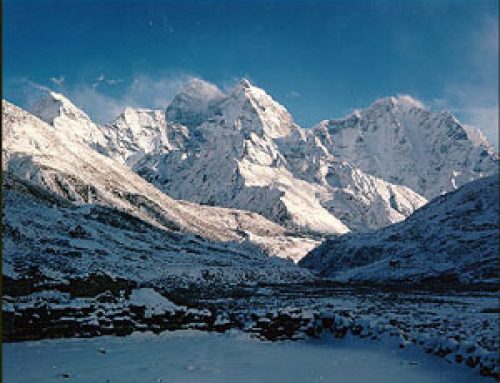
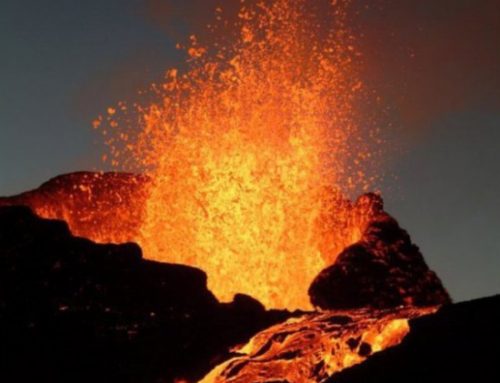
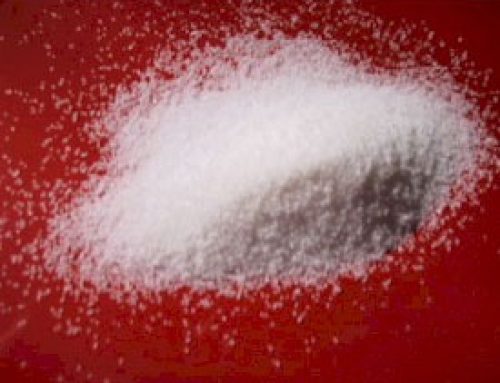


This is my comment, I liked this, but it has wrong facts, bc there was no oceans in the hadeon eon.
Scientists are not yet sure about this: some people think the oceans formed about 4.2 million years ago, near the end of the Hadaean but still within it, and other people think it was 3.8 million years ago, at the end of the Hadaean.
https://serc.carleton.edu/NAGTWorkshops/earlyearth/questions/formation_oceans.html
[…] in the Hadean Eon, Earth’s earliest phase, when prebiotic chemistry was taking shape, the planet’s […]
How do scientists study the Hadean Eon.
Mostly by looking at the rocks that formed at that time, to see how they formed.
[…] Hadean Eon lasted from stellar ignition until around one billion years of age. Since we know that the Sirius […]